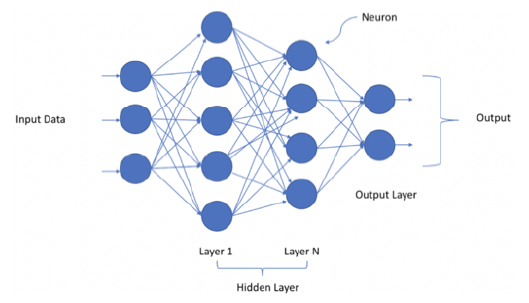


Indian Journal of Science and Technology
DOI: 10.17485/IJST/v14i46.2073
Year: 2021, Volume: 14, Issue: 46, Pages: 3360-3369
Original Article
K R Arjun1,*, T P Surekha2
1 Research Scholar, Department of Electronics & Communication, Vidyavardhaka College of Engineering, Mysore, 570002, India
2 Professor, Department of Electronics & Communication, Vidyavardhaka College of Engineering, Mysore, 570002, India
*Corresponding author email: [email protected]
Received Date:02 December 2021, Accepted Date:23 December 2021, Published Date:24 December 2021
Background/Objectives: The ability to recognize the type of modulation is a critical function of Cognitive Radio. The objective of this study is to increase the modulation classification efficiency in Over-The-Air (OTA) signals by utilizing channel characteristics that are strong. Methods: In this work, we demonstrate how to classify Over-The-Air modulation using a deep learning technique under various fading channels simulating real-time data. The network recognizes eight different digital modulation schemes and three different analogue modulation methods. Each modulation scheme will consist of 10,000 frames with 1024 samples per frame and a sampling rate of 200 kHz. Each sample will pass through fading channels prior to training, with 80% of samples are for training, 10% for validation, and 10% for testing. Six convolutional layers and one fully linked layer comprise our network. The final convolution layer is followed by a batch normalization layer, an activation layer utilizing rectified linear units (ReLUs), and a maximum pooling layer. As a result, the final convolution layer contains soft-max activation instead of the maximum pooling layer. Findings: Modulation categorization OTA is done with two separate ADALM-PLUTO SDRs working in various channel configurations. Network-I has a forecast accuracy of 91.4 percent using 12 Mini-Batch Size and 256 Epochs, whereas Network-II has a prediction accuracy of 95.3 percent using 24 Mini-Batch Size and 128 Epochs. There are a number of ways in which SDR technology can aid to make computer-generated data more realistic, such as adopting alternative channel models. Novelty: Using Software Defined Radio hardware; the same network was used to analyze various fading situations, such as Rayleigh, Rician or Lognormal distributions, and to optimize the network topology by adjusting hyper-parameters to increase accuracy.
Keywords: Cognitive Radios (CR), Fading Channel, OTA, SDR, and Modulation
© 2021 © 2021 Arjun & Surekha. This is an open-access article distributed under the terms of the Creative Commons Attribution License, which permits unrestricted use, distribution, and reproduction in any medium, provided the original author and source are credited.
Published By Indian Society for Education and Environment (iSee)
Subscribe now for latest articles and news.